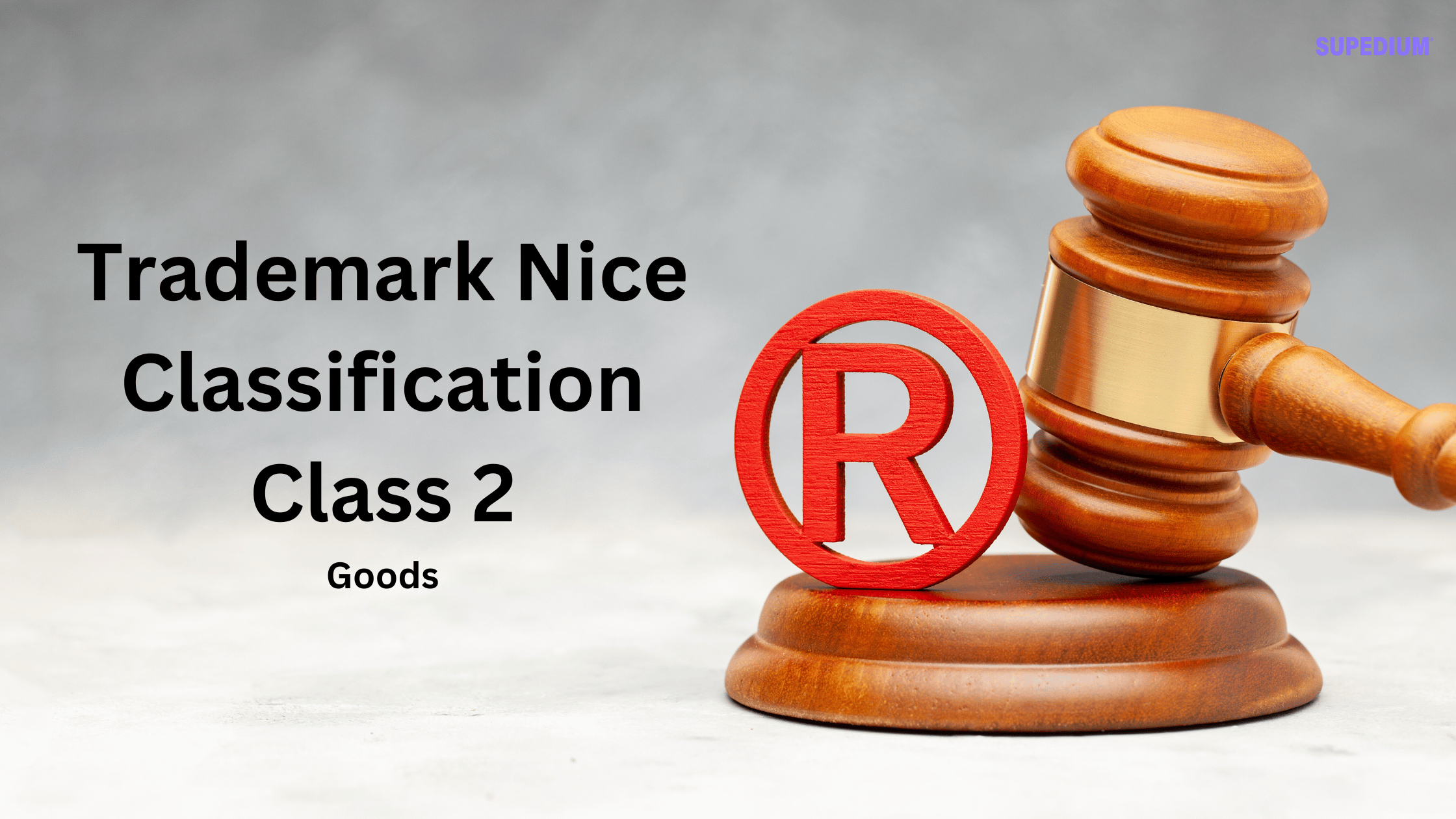Table of Contents
![]()
Introduction
Trademark classifications are essential for categorizing goods and services to ensure clear distinctions and legal protections. Among these classifications, Class 2 plays a crucial role in the realms of industry and art, primarily encompassing paints, varnishes, colorants, and protective preparations. This article delves into the details of Class 2, highlighting its components, exclusions, and significance across various sectors.
1. Overview of Class 2
Class 2 of the Nice Classification system primarily includes goods related to paints, varnishes, lacquers, and preparations used for protection against corrosion and deterioration. This classification is particularly important for manufacturers and artists alike, as it helps define and protect their products within a specific legal framework.
2. Detailed Breakdown of Class 2 Goods
2.1 Paints, Varnishes, and Lacquers
At the core of Class 2 are paints, varnishes, and lacquers. These products serve multiple purposes across various industries. Industrial paints are often formulated for durability and resistance to environmental factors, making them suitable for machinery and infrastructure. Handicrafts may utilize more decorative varnishes, while artists require specialized lacquers to achieve desired finishes on their artwork. Understanding the specific application and formulation of these products is vital for businesses operating in these sectors.
2.2 Protective Preparations
Another significant aspect of Class 2 includes protective preparations aimed at preserving materials from rust and decay. Anti-rust oils, for example, play a critical role in maintaining metal surfaces, while oils for the preservation of wood are essential for extending the lifespan of wooden structures and furniture. These products not only enhance the durability of materials but also contribute to sustainable practices in maintenance and restoration.
2.3 Colorants and Dyes
Class 2 also encompasses a wide range of colorants and dyes. This category includes dyestuffs specifically formulated for textiles, as well as colorants used in foodstuffs and beverages. Each type of colorant is subject to strict regulatory standards to ensure safety and compliance, especially in the food industry. The versatility and application of these colorants make them indispensable in both consumer goods and industrial processes.
2.4 Inks
Inks for printing, marking, and engraving represent another critical component of Class 2. These inks vary significantly based on their intended use, with industrial inks designed for high-volume printing operations, while specialty inks cater to artistic needs. Distinguishing between these types is crucial for compliance with trademark regulations and for meeting industry standards.
2.5 Other Relevant Materials
Class 2 further includes raw natural resins and metals in foil and powder form. Raw natural resins are often used in manufacturing and art, providing essential binding properties in various applications. Meanwhile, metals in foil and powder form are commonly employed in decorative arts and finishing processes, adding a unique aesthetic value to projects.
3. Exclusions from Class 2
While Class 2 encompasses a wide array of goods, several items are explicitly excluded to maintain clarity in trademark classification. These exclusions include:
- Unprocessed and semi-processed resins (Class 1 and Class 17): These materials do not fall under Class 2 due to their different applications.
- Mordants for metals and laundry blueing (Class 1 and Class 3): These specific products have distinct classifications due to their unique functions.
- Cosmetic dyes (Class 3): Cosmetic applications are categorized separately due to different regulatory requirements.
- Paint boxes and inks for stationery (Class 16): These items are intended for educational and office use, thus requiring separate classification.
- Insulating paints and varnishes (Class 17): Products designed for insulation purposes are categorized differently to address their specific properties and uses.
Understanding these exclusions is vital for businesses to ensure proper trademark registration and avoid potential legal conflicts.
4. Importance of Class 2 in Industry and Art
Class 2 products play a significant role in various sectors, including construction, fine arts, and food production. The classification helps enforce quality control and safety regulations, ensuring that consumers receive reliable and safe products. For artists and manufacturers, trademark protection within Class 2 can enhance brand recognition and foster trust among consumers.
5. Conclusion
In summary, Trademark Nice Classification Class 2 is a vital category that encompasses paints, varnishes, colorants, and protective preparations. Its significance extends across multiple industries, highlighting the importance of proper classification for legal protection and quality assurance. As the market evolves, ongoing developments in these areas will likely shape the future landscape of Class 2, emphasizing the need for stakeholders to stay informed and compliant with trademark regulations.
Share This





Be the first to comment